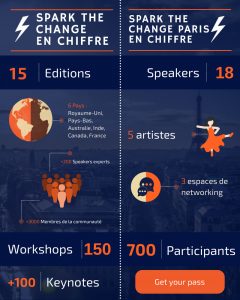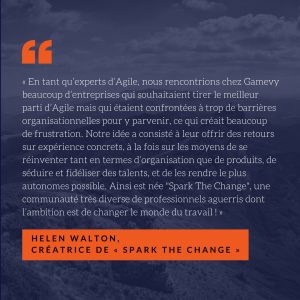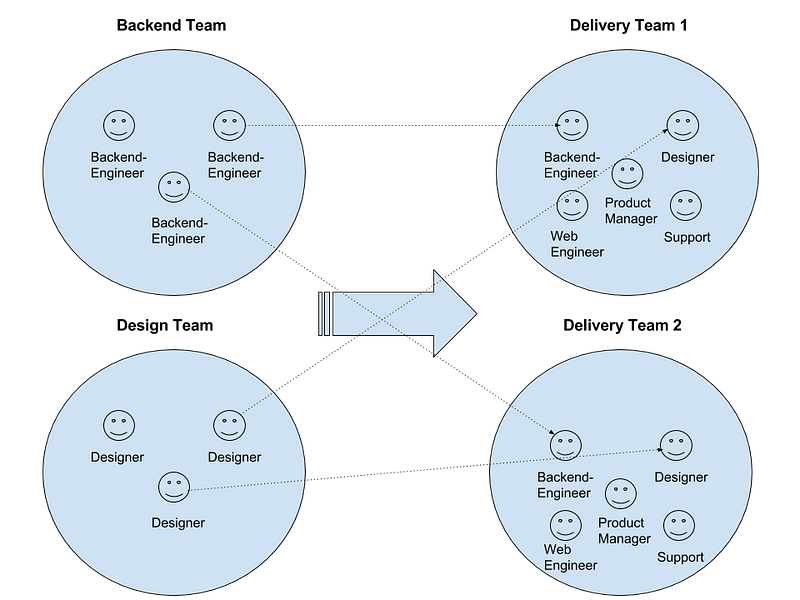Great Leaders Ask Great Questions

For the last few years, I’ve been working with and studying some of the best teams in the world; Red Arrows teams, SAS and US Navy SEAL units, Racing yacht crews, a Formula One pit crew, etc. I set out to study teamwork. In particular, I wanted to know how these teams have become world class. In the course of my studies, I identified six common characteristics, which differentiated these incredible teams.
Interestingly, I didn’t set out to study world class leadership. However, when I found world class teams, I also found world class leadership (I know, I probably should have expected that!). So, as well as studying teamwork, I also began to look at the characteristics that differentiated world class leadership. One of the most powerful insights that I discovered is this…
Great Leaders Ask Great Questions.
In fact, the great leaders that I encountered often didn’t provide any answers! Instead, they realise that the group has the potential to generate a better answer than they could on their own. It’s a principle that James Surowiecki outlines in his book, Wisdom of Crowds. When I shared this idea at an educational conference last year, a Head Teacher responded by saying, “That’s rubbish. Are your trying to tell me that Einstein should ask his class for the answer, and that the class will have a better answer than Einstein?”. “No”, I said, “Einstein is part of the class. So by engaging the class you get Einstein plus the class, not instead”.
Knowing that great leaders ask questions is one thing. Knowing what constitutes a ‘Great Question’, is another. So, what makes a question ‘Great’?
Here are some of my thoughts and reflections…
To me, ‘Great Questions’ are simply the right question, asked at the right time. To ask great questions, we need to understand the problem we’re trying to solve and where we are in the process. Do we need to ask a strategic question, or a tactical question, or one that’s related to implementing and executing a plan?
Strategic Question – Why?
Tactical Questions – What? …. How?
Action & Implementation Questions – Where? …. Who? …. When?
Very simply, it makes sense to understand why we are doing something (and whether we should be doing it), before deciding what we’re doing or how we will do it? Equally, it makes sense to know what we’re going to do, before deciding who will do it, when and where.
To me, ‘Great Questions’ are also well defined and simple. Sometimes it takes time and thought to frame a question well. The world class leaders that I saw at work often ask simple questions, which engage their team to collectively solve a problem. Some of the most powerful questions I’ve heard simply begin with the words, “How could we…?”.
To find out more, read Stronger Together; How Great Teams Work and hear from world class leaders sharing their wisdom on Be World Class TV.
By: Simon Hartley, Founder of Be World Class.

Remote Work: Stories of People and Teams Doing Great Things
Get ready to pack up your laptop and hit the road!
Today, I specialise in facilitating remote work. And it was an experience ten years ago that turned a light bulb on for me — in a way I would have never expected.
I was living in California at the time and belonged to a social community interested in the future, technology, and staying healthy. Every Sunday, we’d meet up for a hike together. One member of the group was particularly interesting to me because he was working on a startup idea I’d never encountered before: he wanted to eradicate death.
To the outside world, it appeared that he was building an online project management tool. That was a very “normal” startup idea, even for ten years ago. But what most people didn’t know was that he was building the tool so that longevity scientists from all over the world could collaborate and solve the “problem” of aging.
He had found that the best people needed for this unusual collaboration were not living in the same place. So his vision was to build a tool that they could use to work together remotely.
It was a true “aha experience” for me. Once we remove the issue of being geographically dispersed, we can gather the best, most enthusiastic people together virtually to work on the most challenging problems imaginable.
I was hooked by the concept and started interviewing people and companies working remotely to see what they were doing. Down the rabbit hole I went!
In the past, we had to go to a specific geographic place in order to access the information we needed for our work. Now, that information is likely accessible from anywhere. And this gives us the opportunity to play with new ways of working and new business models.
I’m increasingly seeing a move from a model of work-life balance, which assumes that work and life shouldn’t overlap or blend, to work-life fusion, where the lines between work and life blur.
Work and Life: No Longer at Odds
Jeffry Hesse is an agile coach working with a distributed development team of approximately 40 people at a company called Sonatype. He loves his work. He also loves mountain climbing, photography, and spending time with his grandmother.
Because he can work from anywhere, Jeffry combines his passions by working while traveling. He started by trying an experiment with his remote team. He spent one month traveling in Argentina — and didn’t tell his colleagues he would be on the road.
He wanted to test how productive he could be while traveling, and if anyone on the team would notice.
Admittedly, it was hard. Finding a decent internet connection in Argentina was one of the most challenging aspects. He tried coworking spaces and staying with friends — and his technical know-how came in very handy while experimenting with various VOIP phones. But while it was hard work, and sometimes shaky, he managed to get his work done without the distributed team noticing that he was on the road.
While being a digital nomad may seem like a radically unconventional way of working compared to the traditional 9 to 5 job, it gives us a glimpse into what’s becoming possible…and increasingly common.
What Does It Mean Today to Be “Present”?
The tools that allow us to work in new ways are developing at breakneck speed. One of the most exciting examples of this is telepresence. Telepresence is a combination of technologies that give you presence somewhere other than your actual location. Your smartphone and standard video conferencing tools — even Facetime — can all be considered forms of telepresence.
My favorite form of telepresence? Robots.
The Revolve Robotics Kubi, for example, allows someone to call in (via video conferencing) to any tablet device. The difference is that you can move the tablet from side-to-side and up and down and control where you are looking from your own laptop.
For instance, if you are a remote participant at a meeting where everyone else is sitting together in a room, you can turn yourself to see who is talking. Other telepresence robots allow you to beam in to what is basically a tablet on wheels, and drive yourself around using the arrow keys of your keyboard. Schools use these for kids who can’t attend classes in person. Museums use these to give remote tours. Even doctors use them when specialists are scarce.
These interactive sensory experiences bring us closer to replicating what it’s like to be together in the same room. And the technology gets better and less expensive every year, opening new options all the time. Holograms are just around the corner!
How Businesses Are Changing
Because of these new technologies, more and more people are like Jeffry, seeking to balance their work with the freedom to pursue their passions. What it means to actually “be at work” is changing rapidly — businesses are evolving as well. Here are three examples:
A Virtual Network With Global Impact
Happy Melly is a social entrepreneurship network of individuals and small businesses dedicated to happiness at work. Supporters include coaches, creatives, authors, speakers, managers, and entrepreneurs. Members of Happy Melly help amplify and globalise great business ideas through virtual and in-person workshops, blogs, guides, books, tools, and videos.
I joined the network to get business advice from people who shared my same purpose and values. With the help of “colleagues” from all over the world, I learned how to structure and scale my company, Collaboration Superpowers, so that myWork Together Anywhere workshop could be offered online and in person around the globe. I’m also now the remote team manager for Happy Melly.
Serendipity Turned Them Into a Team
The team at StarterSquad first started working together (remotely) when a client hired them for a software development project. They didn’t know each other before the project started, but over time, the team clicked.
At one point, the client unexpectedly ran out of money — but the team members weren’t ready to part ways. They decided to find other clients so they could stay working together. They now operate as a self-organised team of entrepreneurs, specialising in building minimum viable products for software startups. In addition, they offer seed funding for startups whose ideas they believe in.
Forget About Facetime
Another company, Teamed.io, prides themselves on having no central office, no meetings, and no phone, Skype, or video calls. The company is made up of a large group of freelance software developers that have never met or spoken to each other. They work entirely through chat on task management systems.
Specific people are brought together for projects depending on the skillset that’s needed. Projects are broken down into very small tasks. Programmers are paid as they complete tasks, and they are not paid if the tasks are not completed. When the project is over, the team is dissolved and everyone moves on to other projects.
Extreme? Perhaps. But it does show ways of working that were never before possible.
Leveraging the Remote Advantage
There are numerous benefits to being able to work from anywhere. Some resonate most for solopreneurs and digital nomads as a source of empowerment to work and travel. Others please HR departments and hiring managers who need to build virtual teams or want to offer flexible benefits to their employees. A few are aiming to raise visibility around worker happiness and the environmental benefits of not commuting.
The ability to tap into information and collaborate with colleagues from anywhere has opened up new possibilities for work-life freedom. People can work on the things they are most passionate about, and businesses can hire people who love what they do versus people who are just doing their jobs.
If you haven’t thought about what’s possible with remote collaboration options in a while, you might be surprised by what’s happening — and what’s possible for you as well! I encourage you to do some more exploring. We’ve come a long way, and it’s only getting better from here.
By: Lisette Sutherland from Collaboration Superpowers

Spark the Change : inspirer les entreprises françaises grâce à des retours sur expérience concrets
Selon un sondage récent de l’Ifop, 91 % des jeunes cadres français pensent que leur entreprise est en train ou va se transformer. Mais pour 47 % des entreprises, la transformation reste aujourd’hui synonyme de « digitalisation ». Elle ne concerne l’évolution du style de management que dans 21 % d’entre elles et la relation client dans seulement 20 %. Pourtant, ces cadres pensent que la priorité devrait être mise sur l’évolution des modes de rémunération des salariés (37 %), l’évolution des styles de management (33 %) et la formation et le développement de compétences (33 %).
Les jeunes cadres français ont bien compris que loin de se cantonner à la digitalisation des processus, la transformation concerne de nombreux aspects de la vie de l’entreprise, et surtout sa culture et son organisation. « Une entreprise ne peut réussir sa transformation digitale si elle n’a initié une profonde transformation en interne » explique Jean-Christophe Conticello, fondateur et CEO de Wemanity.
« L’apparition d’Internet et des technologies associées a bouleversé en profondeur le monde de l’entreprise. Les modes de consommation ont évolué, le temps s’est accéléré, ce qui a entrainé également une profonde évolution des modes de travail. La nécessité de changer est devenue vitale : on ne compte plus les entreprises qui, en hésitant à changer de recette, n’ont pas réussi à se renouveler et ont disparu : Kodak, Virgin Megastore, Nokia, BlackBerry, Yahoo!, etc. Non seulement, la nouvelle génération a compris cette nécessité de changement, mais elle le suscite avec les nouveaux modes de travail qu’elle privilégie. »
 « Spark the Change » : décrypter et inspirer les bonnes pratiques
« Spark the Change » : décrypter et inspirer les bonnes pratiques 
Pour illustrer et expliquer cette évolution, l’événement « Spark the Change » a été créé à Londres en 2014 par Helen Walton et ses associés de Gamevy, avec le soutien de Wemanity, puis décliné en Australie, aux Pays-Bas, en Inde et au Canada. La première édition française sera organisée à Paris, le 26 juin prochain au Théâtre de la Madeleine.
Centré sur le futur du travail et les moyens de repenser l’entreprise de demain, « Spark the Change » propose aux entreprises françaises un programme de conférences de qualité, basé sur des retours d’expérience.
18 experts se succèderont sur scène pour décrypter les tenants et aboutissants de la transformation des entreprises. Parmi eux : Ludovic Huraux, CEO et fondateur de Shapr ; Dirk Ahlborn, CEO Hyperloop Technology ; Anthony Gooch Galvez, Directeur de la communication et des Affaires publiques à l’OCDE ; Anamita Guha, Product Manager, IBM Watson ; Marianne Syed, Executive Director chez Positive Planet UK. Et bien sûr, Arie Van Bennekum, seul rédacteur européen du Manifeste Agile, aujourd’hui Agile Thought Leader chez Wemanity et Jurgen Appelo, CEO et fondateur d’Agility Scales et expert du management 3.0.
3 thèmes principaux
Animées par des professionnels de toutes nationalités qui souhaitent faire évoluer le monde du travail, les conférences « Spark the Change » sont réparties dans trois sessions principales :

- Créer l’entreprise de demain : les différentes étapes pour insuffler un véritable changement dans l’entreprise, sur la base d’un apprentissage continuel, d’une maîtrise totale des technologies et d’une organisation plus agile et réactive.
Jurgen Appelo, CEO et fondateur d’Agility Scales, expliquera notamment dans quelle mesure il est essentiel pour une entreprise d’aider ses collaborateurs à maîtriser continuellement le changement, par exemple via la ludification et d’autres nouvelles pratiques. - Libérer les talents : développer le potentiel de chaque collaborateur, instaurer le bien-être au travail, booster la collaboration et créer un environnement de travail basé sur la confiance.
Anthony Gooch Galvez, Directeur de la communication et des Affaires publiques à l’OCDE, détaillera ainsi « l’Indicateur du vivre mieux » de l’OCDE qui permet de comprendre ce qui contribue au bien-être des individus et des pays, et d’identifier comment susciter plus de progrès pour tous. - « Sparking disruption » : privilégier l’innovation, voire la disruption ; remettre en cause le statu quo ; et valoriser le progrès social, technologique et culturel.

Dans cette session, Dirk Ahlborn, CEO Hyperloop Technology, dévoilera la genèse de la création d’Hyperloop qui, au-delà des records de vitesse et des nombreuses innovations qui le caractérisent, propose surtout de révolutionner l’expérience des usagers du train.
« Spark the Change a été créé pour inspirer les entreprises, à l’heure où elles sont confrontées à plusieurs évolutions stratégiques : la transformation numérique, l’évolution démographique, la co-innovation voire la “coopétition” sur des marchés mondialisés » explique Sabri Ben Radhia, Responsable de l’événement chez Wemanity. « Si Wemanity était présent lors des premières éditions internationales de Spark the Change en tant que sponsor, nous avons repris la marque et sommes devenus son organisateur principal. Réservé à la fois aux entreprises et aux institutions publiques, l’événement a pour objectif de couvrir l’ensemble des aspects relatifs à la transformation des entreprises, sur la base de très nombreux retours d’expérience. Il vise également à aider les entreprises à développer les compétences nécessaires pour mener à bien leur transformation ».
Le programme de la journée a été construit pour privilégier l’échange d’expériences et le networking. 750 personnes issues de l’ensemble de l’écosystème de l’innovation européen sont attendues le 26 juin prochain au Théâtre de la Madeleine.
Aurons-nous le plaisir de vous compter parmi eux ?
Plus d’information sur l’événement : http://sparkthechange.fr/about-us/
Les experts qui interviendront dans les conférences : http://sparkthechange.fr/speakers/
Inscription : http://sparkthechange.fr/tickets/
Also published on Medium.

Your Engineering Team Is Not an Island: Success Demands a Holistic View of the Business
I just re-read the awesome post from my friends David Loftesness and Raffi Krikorian, What Does A VP of Engineering Do Again? And while I agree with everything that they say, I think there is one crucial item missing, which has been present in every job I’ve had because all of them were user-facing internet services and a majority of my job has been working with product teams. Collaboration with stakeholders (especially with product) is key, but if you take it one step further, a VP of Engineering is actually measured by execution in a wider context across many teams or departments. You cannot look at engineering in isolation for your successes or failures.
But first a short story about my first months at SoundCloud. The CTO wanted more front-end work done because an important release was nearing. He asked me to hire more engineers to accomplish that goal. I started recruiting, but then I looked at why the velocity of the existing team was not meeting expectations. So, I went to all of the front-end teams (at that time it was Web, iPhone, and Android) and asked a very simple question “What slows you down the most in your day-to-day work?” To my surprise, everyone gave the same answer “We only have one designer.” They went on to say that although the designer was very good, she was completely overloaded so designs, changes, and simple clarifications took forever to get done.
Now that I knew design was actually the cause for delays, the solution to my problem was not to hire more engineers (which might have even made the problem worse with more work for the designer), but to start building a design team.
Engineering leads need to look at the whole product process (together with the responsible stakeholders) and not just at engineering in isolation. What I did was a very simple (but, in this case, effective) form of value stream mapping. Our self-improvement at SoundCloud continued. You can read Phil Calcado’s excellent post about the organizational aspects of microservices at SoundCloud.
The Best Engineering Leads Will Stop and Assess the Situation
Continually assessing situations in a holistic way isn’t just the job of an engineering lead — everybody involved should take responsibility. But, in my experience, the problem usually surfaces in engineering because when things are not moving fast enough (and when do they ever?) management’s first reaction can be to throw more engineers at the problem so more work will get done, but also (and this is the not so nice scenario), management thinks the engineers are not working hard enough. Other common responses from management include reorganizing the teams or adopting new methodologies. However, as an engineering leader, you are a lot like a doctor: you need to diagnose the illness before treating the symptoms.
Engineering leaders need to look at the whole value chain and to sit with the leaders from affected departments to review at the problem. The solution to a problem might not be to hire more people (which a lot of startups do), but to organize product development in a better way. And if you have to hire, it might mean that you have to move headcount around. When everyone has the same goal goal — delivering more business value — shifting headcount from engineering to design or to recruiting shouldn’t be an issue. Afterall, the goal is more business value, not having the biggest department. So, when I realized our problem at SoundCloud wasn’t going to be fixed by adding more engineers, we created a design team. But this was just the first step towards a better setup.
Even after creating a larger design team, it remained isolated from other departments and was not fully integrated with our workflows. The problems of turnaround and wasted resources were exacerbated by the increasing risk of misalignment between product, design, and engineering. Therefore, the next logical step was to improve the organization by creating a delivery team per product.
Shifting Organizational Structures to Deliver Business Value
A delivery team is a team that can deliver the vast majority (95%) of its backlog items to production without dependencies on other teams. Unlike more horizontally-oriented teams (for example, a front-end engineering team that relies on the back-end engineering team for any back-end changes), a delivery team has all the necessary skills inside their team. So, depending on your company and your product, these teams can look very different. In engineering teams that are infrastructure focused, these teams can consist of only engineers; but if you look at a team that delivers a consumer-facing web app, then the team looks more like this:

Creating these delivery teams and then making sure you have the right staffing for them should eliminate a staffing mismatch between the affected departments. Some team members (like support) might just be a pointperson for the team, e.g., the support person only attends the daily standup and reports what is going on.
So, don’t look at engineering in isolation when trying to solve delivery problems. It is critical that each engineering leader (and especially the VP of Engineering, who can really influence the organizational setup) ensures that the overall product development process is set up in a way that reduces waste and delivers value to the customer which is the whole point of product development in the first place!
This post includes material from the upcoming book “Scaling Teams” by myself and David Loftesness, which will be published by O’Reilly in 2016. In this book, we will explain in detail the various scaling challenges of software startups.
Thanks to Laurel Ruma and David Loftessness
By: Alexander Grosse from issuu

